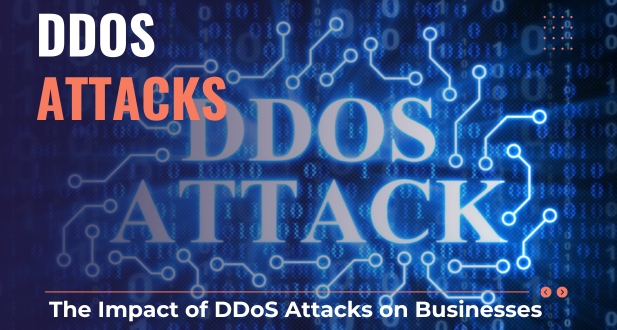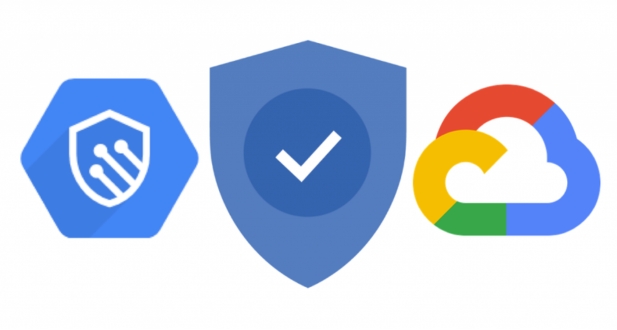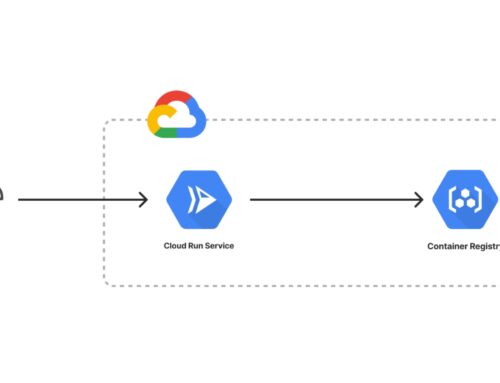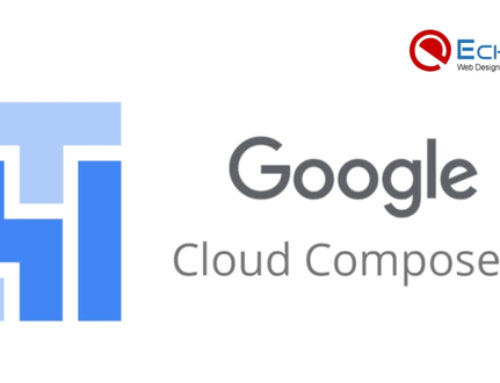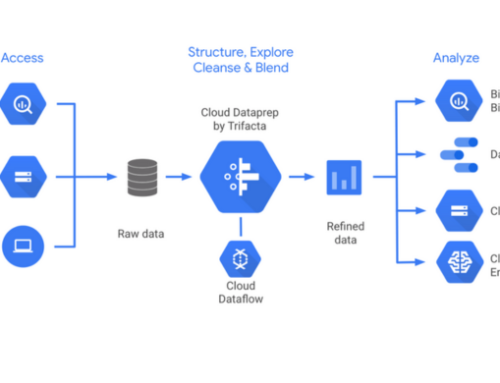Introduction
In the ever-evolving landscape of cybersecurity threats, Distributed Denial of Service (DDoS) attacks stand out as a pervasive and disruptive force. These attacks have become more sophisticated, frequent, and damaging, posing significant challenges for businesses striving to maintain a robust online presence. As organizations increasingly rely on digital platforms for their operations, understanding and mitigating the impact of DDoS attacks are paramount. This introduction provides insights into the changing nature of DDoS attacks, their repercussions on businesses, and the introduction of Google Cloud Platform’s Cloud Armor as a robust solution for DDoS protection.
The Evolving Landscape of DDoS Attacks
Distributed Denial of Service attacks have undergone a significant evolution over the years. Initially, DDoS attacks were relatively straightforward, involving overwhelming a target’s network or website with traffic from multiple sources. However, cybercriminals have adapted, employing more sophisticated techniques such as amplification attacks, where they exploit vulnerabilities in internet protocols to increase the scale of the attack. Additionally, the rise of botnets, comprised of compromised devices, has enabled attackers to orchestrate large-scale and distributed attacks.
The increasing availability of DDoS-for-hire services in the dark web has lowered the entry barrier for malicious actors, making it easier for them to launch attacks. These attacks are not only more potent but also more challenging to mitigate. As a result, organizations need advanced solutions that can adapt to the evolving tactics of DDoS attackers, providing proactive defense against both known and emerging threats.
The Impact of DDoS Attacks on Businesses
DDoS attacks can have severe consequences for businesses across various industries. The primary goal of these attacks is to disrupt online services, causing downtime that can lead to financial losses, damage to reputation, and loss of customer trust. Beyond immediate financial implications, businesses may face legal and regulatory consequences if customer data is compromised during an attack.
The indirect costs of DDoS attacks include expenses related to incident response, recovery efforts, and investments in cybersecurity measures to prevent future attacks. The intangible costs, such as damage to brand reputation, can have a lasting impact on customer loyalty and trust. In today’s interconnected digital economy, where online availability is crucial for business continuity, organizations must prioritize robust DDoS protection measures to safeguard their operations and reputation.
Introducing GCP Cloud Armor: A Robust DDoS Protection Solution
Recognizing the critical need for effective DDoS protection, Google Cloud Platform offers Cloud Armor as a comprehensive solution. Cloud Armor is designed to defend applications and services against DDoS attacks, providing advanced security capabilities backed by Google’s global infrastructure and threat intelligence.
Cloud Armor leverages Google’s vast global network to absorb and mitigate large-scale DDoS attacks before they reach an organization’s infrastructure. It uses a combination of proactive and reactive measures, including rate limiting, blacklisting, and challenge-based mechanisms, to filter out malicious traffic while allowing legitimate requests to reach their destination.
Furthermore, Cloud Armor integrates with Google Cloud’s Load Balancing services, providing a seamless and scalable defense mechanism for applications deployed across multiple regions. With real-time monitoring and analytics, organizations gain visibility into potential threats and can adjust security policies dynamically.
In the face of the evolving DDoS landscape, Cloud Armor stands as a resilient defense mechanism, empowering organizations to safeguard their digital assets, maintain online availability, and uphold the trust of their customers in an increasingly interconnected digital environment.
Navigating the Threat Landscape with GCP Cloud Armor
Understanding the Types of DDoS Attacks
In the complex landscape of cybersecurity threats, Distributed Denial of Service (DDoS) attacks remain a persistent and evolving challenge for organizations. To effectively navigate this threat landscape, it’s crucial to understand the various types of DDoS attacks that malicious actors employ.
- Volumetric Attacks: These attacks aim to overwhelm a target’s network or infrastructure by flooding it with a massive volume of traffic. Volumetric attacks can saturate bandwidth, making legitimate traffic unable to reach its destination.
- Protocol Attacks: These attacks exploit vulnerabilities in network protocols to consume server resources, leading to service disruption. For example, SYN/ACK attacks target the handshake process in the TCP protocol, causing servers to use resources on incomplete connections.
- Application Layer Attacks: Application layer or Layer 7 attacks target specific applications or services by overwhelming them with a high number of requests. These attacks often mimic legitimate traffic, making them challenging to detect.
- DNS Amplification Attacks: In these attacks, cybercriminals exploit insecurely configured Domain Name System (DNS) servers to amplify the scale of the attack. By sending small requests with spoofed source addresses, attackers trick DNS servers into sending large responses to the victim.
- Reflective Amplification Attacks: This type involves using a third-party server to amplify the attack traffic. The attacker sends requests to the third-party server with a spoofed source address, and the server responds to the victim, amplifying the overall impact.
Recognizing the Signs of a DDoS Attack
Detecting a DDoS attack early is crucial for implementing effective countermeasures. Recognizing the signs allows organizations to respond promptly and mitigate potential damage. The following are common signs of a DDoS attack:
- Unusual Traffic Patterns: A sudden spike in traffic, especially if it is coming from a diverse set of sources, can indicate a DDoS attack. Monitoring traffic patterns regularly helps identify anomalies.
- Service Disruptions: If users experience service disruptions, such as slow response times or complete unavailability, it may be a sign of a DDoS attack targeting the organization’s infrastructure.
- Unexplained Network Congestion: DDoS attacks can cause network congestion, leading to slow performance across various services. Unexplained slowdowns in network performance may warrant further investigation.
- Unexpected Server Resource Consumption: A sudden increase in resource consumption, such as high CPU or memory usage, can be indicative of a DDoS attack attempting to exhaust server resources.
Proactively Protecting Against DDoS Attacks with GCP Cloud Armor
GCP Cloud Armor provides proactive and comprehensive protection against the diverse range of DDoS attacks. Leveraging Google’s global infrastructure and advanced threat intelligence, Cloud Armor enables organizations to defend their applications and services effectively.
- Rate Limiting: Cloud Armor allows organizations to set rate-limiting policies, mitigating the impact of volumetric attacks by restricting the number of requests from a single source.
- Blacklisting: Recognizing malicious traffic patterns, Cloud Armor can dynamically blacklist suspicious IP addresses, preventing them from reaching the targeted infrastructure.
- Challenge-Based Mechanisms: By implementing challenge-based mechanisms, Cloud Armor can distinguish between legitimate users and malicious bots, requiring potential attackers to solve challenges before accessing the protected resources.
- Real-Time Monitoring and Analytics: Cloud Armor provides real-time visibility into traffic patterns and potential threats. Organizations can adjust security policies dynamically based on the evolving threat landscape.
- Integration with Load Balancing: Cloud Armor seamlessly integrates with Google Cloud’s Load Balancing services, offering a scalable defense mechanism for applications deployed across multiple regions.
By proactively leveraging the capabilities of GCP Cloud Armor, organizations can fortify their defenses against DDoS attacks, ensuring the resilience and availability of their online assets in the face of evolving cyber threats.
Unveiling the Power of GCP Cloud Armor
Comprehensive DDoS Protection Capabilities
GCP Cloud Armor stands as a formidable guardian against the rising tide of Distributed Denial of Service (DDoS) attacks, providing organizations with a comprehensive suite of DDoS protection capabilities. As the digital threat landscape evolves, Cloud Armor ensures that businesses can maintain the availability and integrity of their online services.
Cloud Armor leverages the expansive global infrastructure of Google Cloud Platform to absorb and mitigate large-scale DDoS attacks before they reach the organization’s critical assets. This comprehensive protection spans various dimensions, including:
- Volumetric Attack Defense: Cloud Armor employs advanced techniques to handle volumetric attacks that attempt to overwhelm network resources. By efficiently filtering out malicious traffic, it ensures that legitimate requests can reach their intended destinations.
- Protocol Attack Mitigation: The platform is adept at thwarting protocol-based attacks that exploit vulnerabilities in network protocols. Through meticulous analysis and filtering, Cloud Armor prevents these attacks from compromising server resources and disrupting services.
- Application Layer Protection: Cloud Armor extends its shield to the application layer, where sophisticated Layer 7 attacks often occur. It can discern between legitimate user requests and malicious traffic, allowing organizations to maintain the functionality and performance of their applications even under heavy duress.
- DNS Amplification and Reflective Attacks: Recognizing the tactics employed in DNS amplification and reflective attacks, Cloud Armor implements measures to counteract these strategies. By securing DNS servers and preventing amplification, it reduces the effectiveness of these attack vectors.
- Dynamic Blacklisting: Cloud Armor dynamically blacklists suspicious IP addresses, swiftly neutralizing potential threats. This adaptive approach ensures that emerging and ongoing DDoS attacks are mitigated in real-time, safeguarding the organization’s digital assets.
With these capabilities, Cloud Armor delivers a holistic defense against the diverse array of DDoS attacks, providing organizations with the confidence to operate in an online landscape fraught with cyber threats.
Advanced Layer 7 Attack Mitigation
As cyber threats become more sophisticated, attackers increasingly target the application layer (Layer 7) to exploit vulnerabilities and disrupt services. Cloud Armor’s advanced Layer 7 attack mitigation capabilities empower organizations to defend against these nuanced and complex attacks.
- Granular Control and Custom Rules: Cloud Armor enables organizations to define granular security policies at the application layer. Custom rules can be crafted to filter traffic based on specific characteristics, allowing for precise control over what traffic is permitted and what is blocked.
- Machine Learning-Based Threat Detection: Cloud Armor employs machine learning algorithms to analyze traffic patterns and detect anomalous behavior indicative of Layer 7 attacks. This proactive approach enables the platform to adapt to evolving attack methodologies and enhance its threat detection capabilities over time.
- Behavioral Analysis: Cloud Armor conducts behavioral analysis to differentiate between legitimate user interactions and malicious activities. By understanding the normal behavior of applications, the platform can identify deviations and take corrective action to mitigate potential threats.
- Challenge-Response Mechanisms: In situations where suspicious behavior is detected, Cloud Armor can implement challenge-response mechanisms. These mechanisms present challenges to users, such as solving puzzles or completing CAPTCHAs, to ensure that only legitimate users gain access to protected resources.
- Real-Time Adaptation: Cloud Armor’s real-time adaptation capabilities allow organizations to adjust their security policies dynamically based on the evolving threat landscape. This adaptability ensures that Layer 7 attack mitigation remains effective against emerging threats.
By focusing on advanced Layer 7 attack mitigation, Cloud Armor empowers organizations to secure their applications against intricate and targeted attacks, preserving the integrity and availability of critical digital assets.
Intelligent Bot Management
In the dynamic online ecosystem, bots play a dual role—they can be essential for various legitimate functions, such as search engine crawlers, or they can be malicious, carrying out automated attacks. Cloud Armor incorporates intelligent bot management to discern between beneficial and harmful bot activities, providing organizations with the tools to manage bot traffic effectively.
- Bot Identification and Classification: Cloud Armor utilizes sophisticated algorithms to identify and classify bots based on their behavior. By analyzing factors such as request patterns, frequency, and origin, the platform can distinguish between legitimate bots and those with malicious intent.
- Whitelisting and Blacklisting: Organizations can establish whitelists and blacklists to specify which bots are permitted and which are denied access. This granular control ensures that only authorized bots, such as search engine crawlers, are allowed to interact with the protected resources.
- Rate Limiting: Cloud Armor can implement rate limiting for specific bot behaviors, preventing excessive requests or other potentially harmful activities. Rate limiting helps organizations maintain the availability of their services by mitigating the impact of automated attacks.
- Challenge-Response Mechanisms for Bots: Similar to the approach taken with human users, Cloud Armor can deploy challenge-response mechanisms specifically designed for bots. By presenting challenges that require logical reasoning or pattern recognition, the platform ensures that only genuine bots can successfully navigate through.
- Real-Time Monitoring and Analytics: Cloud Armor provides real-time monitoring and analytics for bot traffic, offering insights into their activities and potential threats. Organizations can leverage this information to fine-tune their bot management policies and adapt to changing conditions.
Intelligent bot management with Cloud Armor allows organizations to harness the benefits of bots while protecting against malicious automation. By striking a balance between accessibility and security, the platform ensures that organizations can fully utilize the capabilities of the online ecosystem without compromising their defenses against automated threats.
In essence, Cloud Armor’s comprehensive DDoS protection, advanced Layer 7 attack mitigation, and intelligent bot management collectively unveil a robust security solution. This multi-faceted approach empowers organizations to navigate the intricate threat landscape, defending against a spectrum of DDoS attacks and ensuring the uninterrupted availability of their digital assets.
GCP Cloud Armor: A Comprehensive Security Solution
Seamless Integration with GCP Infrastructure
GCP Cloud Armor stands out as a comprehensive security solution by seamlessly integrating with the broader Google Cloud Platform (GCP) infrastructure. This integration is designed to provide organizations with a unified and cohesive security architecture that aligns with the scalability, flexibility, and efficiency of the GCP ecosystem.
Cloud Armor’s integration with GCP allows organizations to extend their security policies consistently across diverse services and applications. Whether organizations leverage Google Kubernetes Engine (GKE), Compute Engine, or App Engine, Cloud Armor ensures a unified approach to security. This integration simplifies the management of security policies, allowing organizations to implement and enforce consistent rules without the need for complex configurations for each service.
Furthermore, Cloud Armor complements the native security features of GCP, enhancing the overall resilience of cloud-based applications. The platform seamlessly integrates with GCP’s Load Balancing services, enabling organizations to safeguard their applications against threats at the network edge. This synergy ensures that security is an integral part of the entire infrastructure, from application development to deployment and ongoing operations.
By offering a seamless integration with GCP infrastructure, Cloud Armor empowers organizations to implement a holistic security strategy that aligns with the principles of cloud-native architecture. This cohesive approach not only strengthens security but also streamlines management and enhances operational efficiency across the entire GCP environment.
Granular Policy Configuration and Control
One of the distinguishing features of GCP Cloud Armor is its capability to provide granular policy configuration and control. In the ever-evolving landscape of cybersecurity threats, organizations need fine-grained control over their security policies to adapt to dynamic challenges. Cloud Armor addresses this need by offering robust tools for crafting and customizing security policies at a granular level.
Organizations can define and implement security policies based on specific attributes such as IP addresses, geographic locations, or even specific URL paths. This level of granularity allows for precise control over traffic, ensuring that security measures are tailored to the unique requirements of different applications and services.
Cloud Armor’s granular policy configuration extends to its capabilities in defending against Distributed Denial of Service (DDoS) attacks. The platform enables organizations to set rate-limiting policies, preventing malicious traffic from overwhelming applications. This fine-tuned control over the flow of traffic ensures that legitimate users experience uninterrupted service while potential threats are swiftly mitigated.
Moreover, Cloud Armor facilitates the creation of custom rules that can be adapted to the nuances of different applications. This flexibility is particularly valuable in complex environments where diverse applications may have distinct security requirements. Whether it’s protecting against specific types of attacks or enforcing access controls, Cloud Armor’s granular policy configuration empowers organizations to tailor their security posture with precision.
By offering granular policy configuration and control, Cloud Armor provides organizations with the flexibility and adaptability needed to navigate the intricacies of modern cybersecurity challenges. This capability ensures that security measures are not one-size-fits-all but rather customized to meet the specific demands of each application and service within the GCP environment.
Real-time Attack Visibility and Reporting
GCP Cloud Armor distinguishes itself as a comprehensive security solution by providing real-time attack visibility and reporting capabilities. In the dynamic landscape of cybersecurity, the ability to gain immediate insights into ongoing threats is essential for organizations to respond effectively and mitigate potential risks.
Cloud Armor’s real-time attack visibility features offer organizations a detailed and up-to-the-minute understanding of the security status of their applications. This visibility spans a spectrum of insights, including the identification of malicious traffic, detection of potential threats, and the overall health of the security posture. By providing real-time data on the nature and scope of attacks, Cloud Armor empowers organizations to make informed decisions swiftly.
The platform offers a centralized dashboard that consolidates critical security metrics, allowing organizations to monitor their security posture at a glance. This dashboard provides insights into traffic patterns, threat origins, and any anomalies that may indicate a potential security incident. This real-time visibility is instrumental in enhancing situational awareness and facilitating prompt responses to emerging threats.
Cloud Armor’s reporting capabilities extend beyond real-time visibility to encompass historical data and trend analysis. Organizations can access detailed reports that provide insights into past security incidents, attack patterns, and the effectiveness of implemented security measures. This historical context is valuable for refining security strategies, identifying recurring threats, and continuously improving the overall security posture.
Moreover, Cloud Armor seamlessly integrates with Google Cloud’s broader observability and monitoring tools, such as Stackdriver. This integration ensures that real-time attack visibility is part of the holistic monitoring approach within the GCP environment. By leveraging Stackdriver, organizations can correlate security data with other operational insights, creating a comprehensive view of their cloud infrastructure.
In summary, Cloud Armor’s real-time attack visibility and reporting capabilities equip organizations with the tools needed to stay ahead of emerging threats. This proactive approach to security empowers organizations to respond swiftly and decisively, ultimately enhancing the resilience of their applications and services against a constantly evolving threat landscape.
Optimizing Costs with GCP Cloud Armor
Flexible Pricing Models to Suit Diverse Needs
GCP Cloud Armor offers flexible pricing models to accommodate the diverse needs of organizations, ensuring that they can optimize costs while benefiting from robust security measures. The platform’s pricing structure is designed to align with varying deployment sizes and traffic patterns, providing organizations with the scalability and flexibility needed to tailor their security spending to specific requirements.
One key aspect of Cloud Armor’s flexible pricing is its consideration of the scale of deployments. The platform allows organizations to choose pricing tiers based on factors such as the volume of processed traffic, the number of protected resources, and the desired level of security. This tiered approach ensures that organizations only pay for the resources and protection they actually need, preventing unnecessary costs for smaller deployments while allowing for seamless scaling as traffic volumes grow.
Moreover, Cloud Armor’s pricing models are designed to be transparent and predictable. Organizations can benefit from clear visibility into their usage and associated costs, enabling informed decision-making and budget management. This transparency is crucial for organizations seeking to optimize costs without compromising on the level of protection required for their applications and services.
By offering flexible pricing models, GCP Cloud Armor empowers organizations to optimize their security spending, aligning it with their specific needs and usage patterns. This flexibility ensures that organizations of all sizes can access enterprise-level security without incurring unnecessary expenses, fostering cost efficiency and resource optimization within their cloud deployments.
Cost-Effective Protection for Cloud Deployments
GCP Cloud Armor delivers cost-effective protection for cloud deployments, allowing organizations to fortify their applications and services against cybersecurity threats without breaking the bank. The platform’s cost-effectiveness is rooted in its ability to provide robust security measures while offering flexible pricing options tailored to different deployment scenarios.
One key element contributing to Cloud Armor’s cost-effectiveness is its automated threat detection and response capabilities. By autonomously identifying and mitigating security threats in real-time, the platform reduces the need for manual intervention, saving organizations both time and labor costs associated with traditional security measures.
Additionally, Cloud Armor’s seamless integration with Google Cloud’s broader ecosystem enhances its cost-effectiveness. The platform synergizes with other GCP services, leveraging shared resources and minimizing the need for redundant security infrastructure. This integrated approach ensures that organizations can achieve a high level of security for their cloud deployments without the need for excessive investments in standalone security solutions.
Furthermore, Cloud Armor’s scalability allows organizations to adapt their security measures to changing requirements without incurring disproportionate costs. The platform’s ability to handle varying workloads and traffic patterns ensures that organizations can dynamically adjust their security posture based on actual usage, preventing over-provisioning and unnecessary expenditures.
In summary, GCP Cloud Armor provides cost-effective protection for cloud deployments by combining automated threat detection, seamless integration with GCP services, and scalability. The platform’s ability to deliver robust security measures at a competitive cost empowers organizations to prioritize cybersecurity without compromising their budgetary constraints.
Maximizing Value with GCP Cloud Armor
GCP Cloud Armor goes beyond mere cost-effectiveness by maximizing the overall value organizations derive from their investment in cloud security. The platform is designed to offer a comprehensive set of features and benefits that collectively enhance the value proposition, ensuring that organizations not only optimize costs but also receive substantial returns on their security investment.
One way Cloud Armor maximizes value is through its multi-layered security approach. The platform combines automated threat detection, granular policy configuration, and integration with Google Cloud’s observability tools to deliver a holistic and robust security posture. This comprehensive approach ensures that organizations receive high-value protection against a wide range of cybersecurity threats.
Moreover, Cloud Armor’s role in streamlining security operations contributes to maximizing value. The platform’s intuitive interface, automated features, and seamless integration reduce the operational overhead associated with security management. This operational efficiency allows organizations to allocate resources effectively, focusing on strategic initiatives rather than day-to-day security tasks.
The value proposition of Cloud Armor is further amplified by its role in enhancing the overall resilience of cloud deployments. By providing advanced DDoS protection, mitigating Layer 7 attacks, and offering continuous monitoring and optimization capabilities, the platform contributes to the reliability and availability of applications and services. This increased resilience translates into tangible business value by minimizing downtime, ensuring a positive user experience, and safeguarding brand reputation.
In conclusion, GCP Cloud Armor maximizes value for organizations by delivering a multi-layered security approach, streamlining security operations, and enhancing overall cloud deployment resilience. The platform’s ability to offer a comprehensive set of features ensures that organizations not only optimize costs but also receive substantial and enduring returns on their investment in cloud security.
Real-World Applications of GCP Cloud Armor
Protecting Web Applications and APIs
GCP Cloud Armor plays a pivotal role in safeguarding web applications and APIs from a myriad of cybersecurity threats, ensuring the continuous availability and reliability of these critical digital assets. By leveraging its advanced DDoS protection capabilities, Cloud Armor helps organizations thwart large-scale distributed denial-of-service attacks that aim to disrupt the normal functioning of web applications and APIs.
The platform’s granular policy configuration allows organizations to define specific rules and conditions for access to their web applications and APIs. This includes the ability to set up geo-based access controls, implement rate limiting to mitigate abusive traffic, and enforce authentication requirements. These features collectively contribute to a robust defense mechanism, preventing unauthorized access, protecting against malicious activities, and ensuring the integrity of web application and API resources.
Additionally, Cloud Armor integrates seamlessly with other Google Cloud services, providing a unified security ecosystem for web applications. The platform’s compatibility with Google Cloud’s Identity and Access Management (IAM) allows organizations to manage user access and permissions effectively. This integration enhances overall security posture, creating a comprehensive defense strategy for web applications and APIs within the Google Cloud environment.
Safeguarding Cloud-Based Workloads
GCP Cloud Armor extends its protective capabilities to safeguard cloud-based workloads, ensuring the security and resilience of applications and services deployed in the cloud. As organizations increasingly transition their workloads to cloud environments, Cloud Armor becomes an integral component of their cybersecurity strategy, providing defense against a wide range of threats.
One key aspect of Cloud Armor’s role in safeguarding cloud-based workloads is its ability to mitigate Layer 7 attacks, including those targeting specific applications and services. By inspecting and filtering traffic at the application layer, the platform can identify and block malicious requests, ensuring the availability and performance of cloud-hosted applications.
Moreover, Cloud Armor’s continuous monitoring and optimization features contribute to the ongoing security of cloud-based workloads. The platform dynamically adjusts security policies based on real-time insights, adapting to changing traffic patterns and emerging threats. This proactive approach enhances the overall resilience of cloud workloads, allowing organizations to maintain a secure and reliable computing environment.
Ensuring Security for Hybrid and Multi-Cloud Environments
GCP Cloud Armor provides a robust security solution for organizations operating in hybrid and multi-cloud environments, addressing the unique challenges posed by distributed infrastructures. In hybrid scenarios where organizations maintain a combination of on-premises and cloud-based resources, Cloud Armor offers consistent security policies across both environments, ensuring a unified and comprehensive defense strategy.
The platform’s compatibility with multi-cloud architectures further enhances its applicability. Organizations leveraging multiple cloud providers can deploy Cloud Armor to maintain a consistent security posture, streamlining the management of security policies and ensuring a standardized approach to threat mitigation.
Additionally, Cloud Armor’s centralized visibility and reporting capabilities facilitate efficient monitoring and management of security across hybrid and multi-cloud environments. Security teams can gain insights into traffic patterns, threat landscapes, and the overall health of security measures, enabling them to make informed decisions and respond promptly to emerging security challenges.
In summary, GCP Cloud Armor is instrumental in safeguarding web applications and APIs, protecting cloud-based workloads, and ensuring security in hybrid and multi-cloud environments. Its versatility and adaptability make it a valuable asset for organizations navigating complex and dynamic computing landscapes.
Conclusion
In conclusion, GCP Cloud Armor stands as a robust and versatile cybersecurity solution within the Google Cloud ecosystem. With its advanced DDoS protection, granular policy configuration, and seamless integration capabilities, Cloud Armor empowers organizations to fortify their web applications, APIs, and cloud-based workloads against a diverse range of cyber threats. Whether protecting against large-scale attacks, mitigating Layer 7 vulnerabilities, or ensuring security in hybrid and multi-cloud environments, Cloud Armor delivers a comprehensive defense strategy. By providing continuous monitoring, optimization, and centralized visibility, it exemplifies Google Cloud’s commitment to delivering effective and scalable security solutions.

